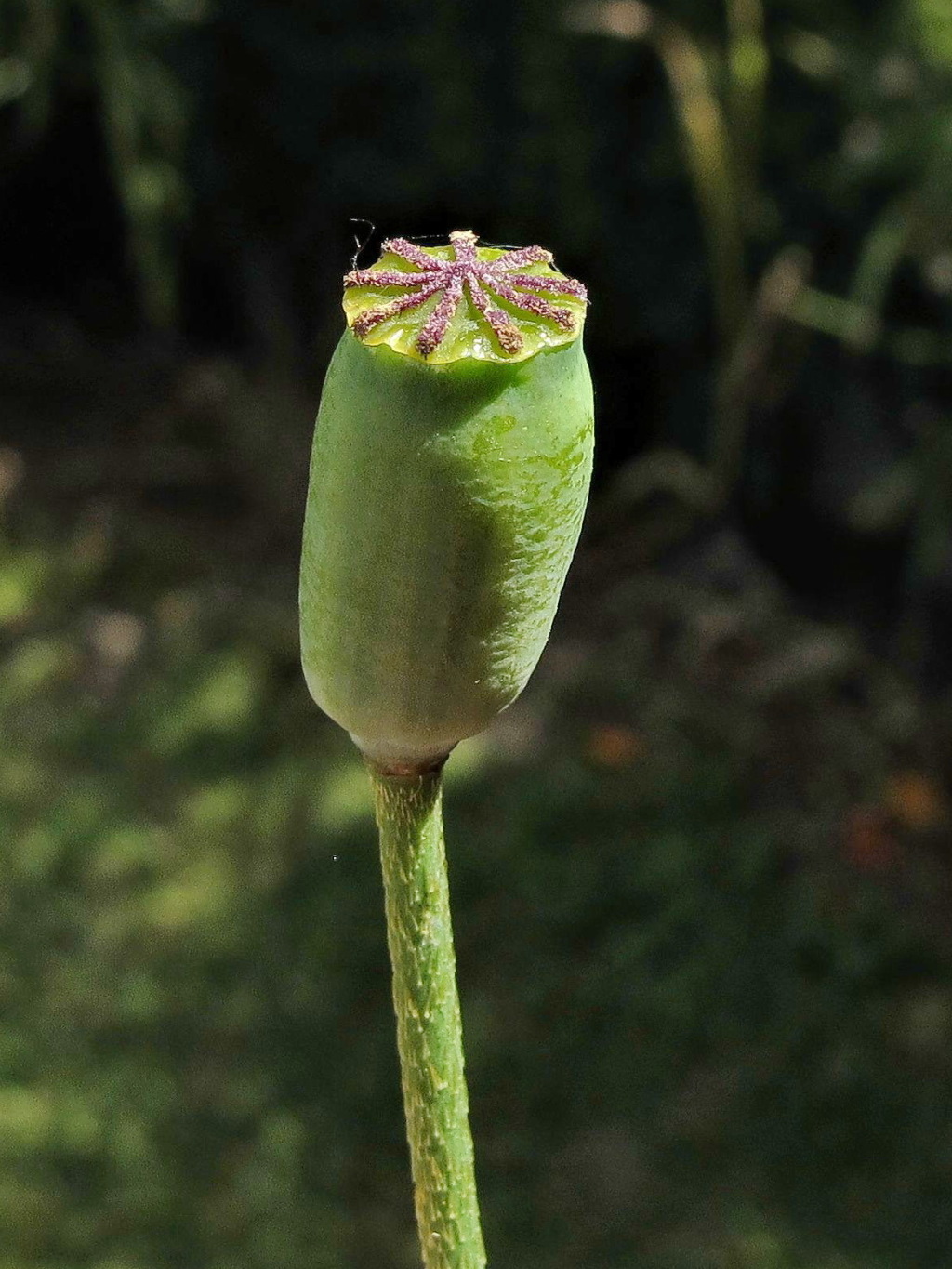Papaver dubium
L.Plants annual, caulescent, sometimes subscapose, to 70 cm high, hirsute to hispid; stems simple or branched. Leaves to 20 cm long; basal and lower cauline blades pinnately lobed, upper cauline blades 1–2-pinnately lobed, their bases not stem-clasping. Peduncles spreading- to ascending-hispid proximally, strongly appressed-hispid distally; petals to 3 cm long, orange to red, rarely with dark basal spot; filaments purple, filiform, anthers violet; stigmas 7–9, disc ± flat. Capsules sessile or substipitate, narrowly obovoid, at least twice as long as wide, to 2 cm long, usually distinctly ribbed, glabrous. Flowering and fruiting Sep.–Jan.
LoM, MuM, Wim, GleP, VVP, VRiv, GipP, OtP, WaP, Gold, CVU, NIS, EGU. Also naturalised SA, Qld, NSW, Tas. Native to Europe, south-western Asia. Occurs in open, usually disturbed areas, in gravel, ballast, sand, loam, and clay.
Sometimes seems to intergrade with P. rhoeas, but usually distinguished readily by the nature of the distal pubescence on the peduncles— whether strongly appressed or not— and by the shape of the mature capsules— whether more or less than twice as long as broad.
Kiger, R.W. (1996). Papaver. In: Walsh, N.G.; Entwisle, T.J., Flora of Victoria Vol. 3, Dicotyledons Winteraceae to Myrtaceae, pp. 69–72. Inkata Press, Melbourne.
 Spinning
Spinning



